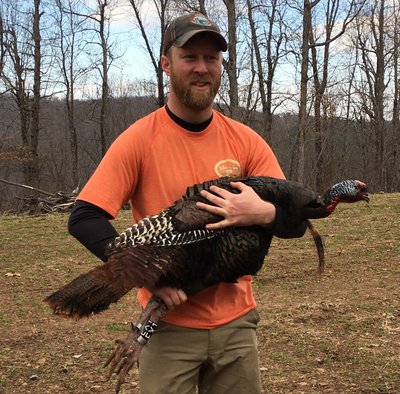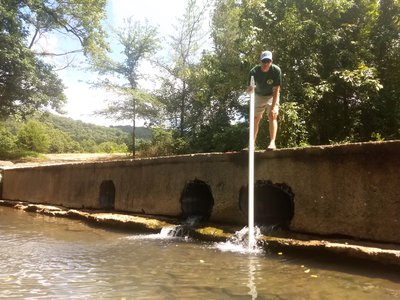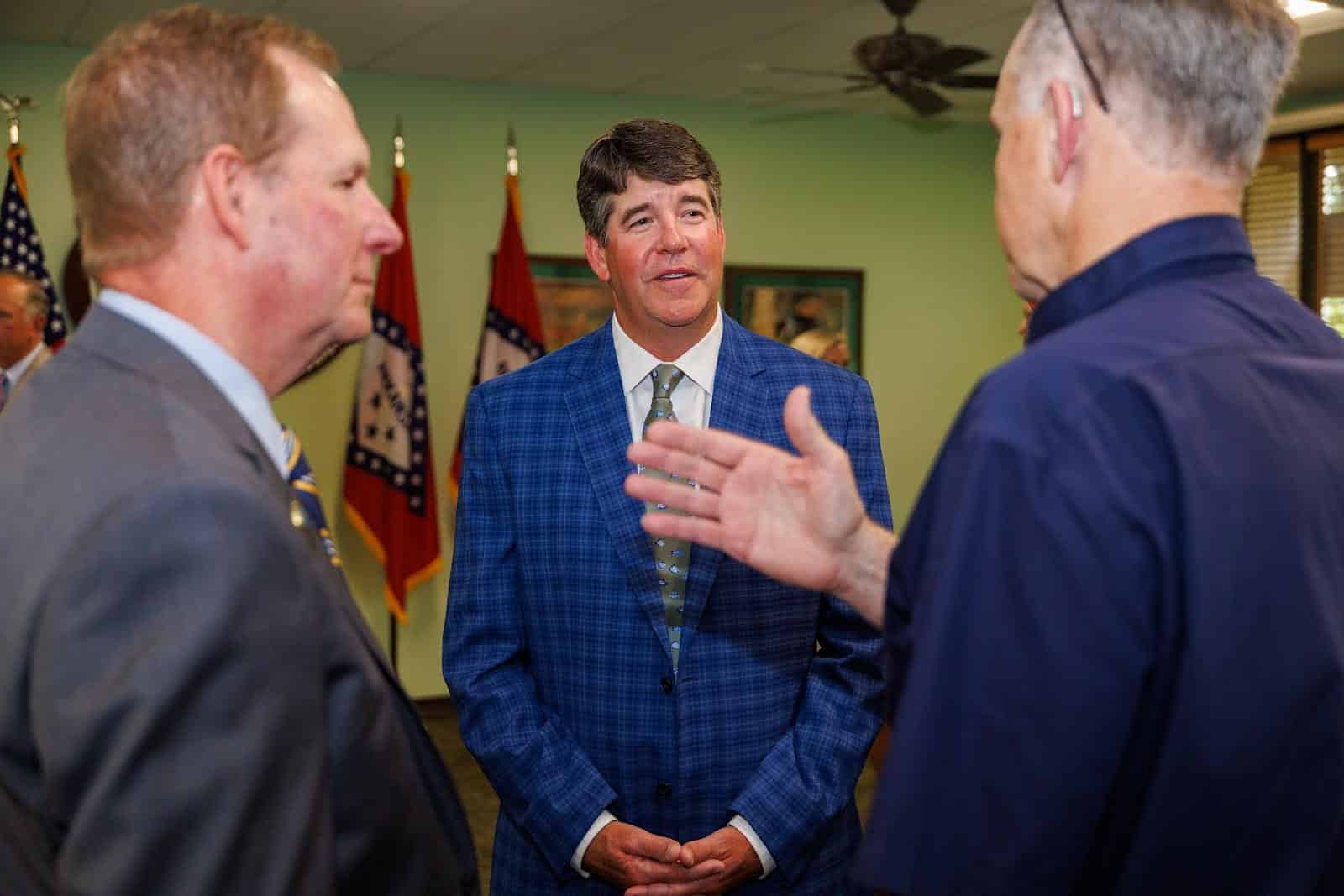Turkey research, stream restoration featured in AGFC’s Wild Science webinar
ON 04-21-2021

April 21, 2021
Randy Zellers
Assistant Chief of Communications
LITTLE ROCK — Tune into this month’s Wild Science Webinar, hosted by the Arkansas Game and Fish Commission to keep you informed about some of the science and work going on in Arkansas’s outdoors. This month’s topics, which are available to view at https://www.youtube.com/watch?v=IDbUKQ0V5eU highlight some of the Commission’s recent work to improve critical resources in the Ouachita Mountains and Ozark Plateau: the eastern wild turkey and free-flowing streams.

Turkey Talk
The first presentation for April revolves around recent research into the timely issue of Eastern wild turkeys and their recent decline across the southeast. The research focused on recent work done by the AGFC and University of Arkansas at Monticello concerning Arkansas’s no-jake harvest rule. The AGFC and UAM studied survival rates of immature male turkeys (jakes) and adult male turkeys (gobblers) since the implementation of a regulation in 2011 to prevent the harvest of jakes by adult hunters. Youth hunters still are allowed one jake as part of their seasonal two-bird limit.
“Prior to the year 2000, jake harvest was relatively high, roughly 39 percent on average,” Jeremy Wood, turkey program coordinator for the AGFC, said. “Today, only about 4 percent of the reported harvest is made up of jakes.”
The study focused on whether this change in harvest regulations ultimately affected the survival of jake turkeys into the next year.
To do this 342 male turkeys were banded (245 adult gobblers, 97 jakes), and 89 male turkeys were outfitted with satellite transmitters. Some banded birds were worth a small monetary reward once the hunter reported the harvest, and satellite transmitters were used to verify turkey survival without the band reward system to compare results.
Once the study was complete, biologists were able to confirm that jake survival was very high, attributable to low harvest rates of these young turkeys. They also were able to get a glimpse into the survival rate of two-year-old and older birds.
“Juvenile jake survival is very high, at 90 percent annually,” Wood said. Two-year-old gobblers survival is quite low, at 30 percent. Then after that first season when they’re legal for all hunters, their survival jumps up to a 50 to 55 percent range.”

Rockhouse Restoration
The second presentation for April highlighted the removal of low-water dams and the recent success at Rockhouse Creek in Madison County on Nature Conservancy property between two portions of McIlroy Madison County Wildlife Management Area. The nature Conservancy had just acquired the property, and partnered with the AGFC to improve the creek that flows into the Kings River, a valuable smallmouth fishery and floating destination in northern Arkansas.
“The creek had become wide and unstable with major shoreline erosion,” Sean Saunders, AGFC Stream Team coordinator for north Arkansas, said. “It was estimated that Rockhouse Creek was depositing 1,000 tons of sediment into the Kings River.”
A low-water crossing also served as a barrier to fish passage and was unreliable during wet weather as a safe means to cross the creek.
Excavators equipped with global navigation satellite systems cut a new 2,500-foot channel through the creek’s existing floodplain.
“We used more than 700 tons of rock and boulders in the construction of the channel, much of which was available from another TNC project that they donated for the work,” Saunders said. “We also were able to take advantage of the opportunity to remove more than 2,000 invasive cedars from the property that were used to construct toe-wood structures that create instant fish habitat and slow the water velocity down next to the bank, preventing erosion.”
One of the most interesting partnerships in the project was with the Recreational Aviation Foundation, a non-profit organization that works to prevent the closure of small recreational airstrips across the U.S.
“They actually flew into the airport to help,” Saunders said. “People from many different states planted trees for this project.”
More than 3,000 trees and shrubs were planted along the new creek to help stabilize the shoreline of the new channel.
The low-water crossing was replaced with a 45-foot bridge with floodplain culverts to allow water to flow naturally through the system and still enable vehicles to cross the creek for safety purposes.
Visit https://www.agfc.com/en/stay-informed/wild-science-webinars/ for a list of all previous Wild Science seminars presented by the AGFC.
Recent News

Arkansas Wildlife Weekly Fishing Report
Jul. 10, 2025

Lonoke aquaculturist named to AGFC
Jul. 10, 2025
Subscribe to Our Weekly Newsletter E-mails
Don’t miss another issue. Sign up now to receive the AGFC Wildlife Weekly Newsletter in your mailbox every Wednesday afternoon (Waterfowl Reports are published weekly during waterfowl season and periodically outside the season). Fishing Reports arrive on Thursdays. Fill in the following fields and hit submit. Thanks, and welcome!
